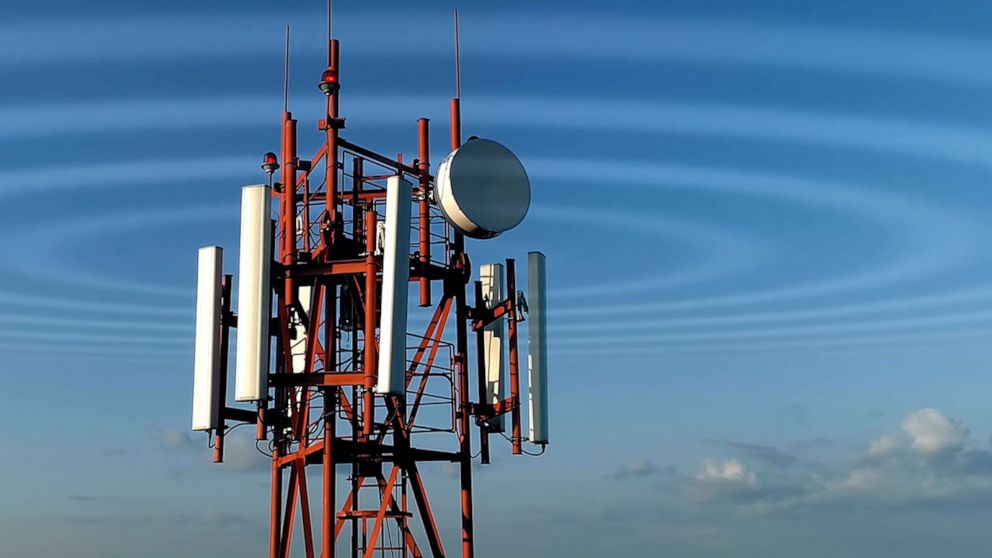If you've ever been through a town, you may have seen tiny 5G cell towers on street light poles. They look like little boxes however they're actually sending wireless signals from mobile providers to your mobile.
The smaller ones are being replaced by larger specially-designed cell towers. While they're less noticeable however, they could cause problems for people.
safe distance to live from cell phone tower define the maximum amount of time one can expose to electromagnetic radiation from wireless devices. The exposure limits are based upon scientific research that show that RF energy could be harmful to health.
The specific absorption rate (SAR) is an indicator of the radiofrequency energy absorption by tissues. It's typically 1.6 watts per kilogram, calculated over one gram of tissue.
However, because 5g transmits at higher frequencies this could be able to increase the intensity of energy on the skin and other directly-exposed body areas. This can lead to a wide range of possible harms, such as an increase in appearance of skin conditions such as dermatitis, skin cancer and cataracts.
Due to the possible harmful effects of radiation from 5G, PSU has chosen to establish a general, localized power density limit of 4 mW/cm2 averaged on 1cm2, but not exceeding 30 minutes for all 5G services at 3000 GHz. This localized limit is in accordance with the peak spatial-average SAR of 1.6 W/kg, averaged over one grams of tissues at six GHz.
The FCC's Maximum Exposure Thresholds for Maximum Exposure
If you've ever used a cell phone, then you're aware that the safest location from the tower should be at least 400 meters away. This is because the power of transmission from the cell tower is significantly increased the further away you are from it.
Although this may sound like a good idea but the truth is that people who live close to towers might be more susceptible to health problems. For example, a study from 2014 in India discovered that people who lived within 50m from cell towers suffered significant more health issues than those living further away from the antennas.
This study found that people who moved into areas farther away from cell towers noticed their symptoms improve within a few days. Studies have also demonstrated that exposure to extreme amounts of electromagnetic field radiofrequency (EMFs) could cause brain tumors, cancers as well as other health issues.
This is because RF radiation, which is utilized in wireless communication, can be absorbed by the body's outer layer, which is the skin. It is crucial to know since the skin serves as a shield against injury to the body, infection caused by pathogenic microorganisms and entry of toxic substances. The skin is the largest organ in the human body. It is responsible for maintaining the integrity of other organs.
The FCC's Minimum Exposure Thresholds for the Minimum Exposure
The FCC's Minimum Exposure Thresholds rely on numerous assumptions that are not supported by evidence from science. These include the erroneous assumption that short-term exposures to RF radiation are safe because of the minimal radiation penetration in the human body (i.e., tissue heating).
The assumption is also ignoring the more extensive penetration of ELF elements of modulated radio signals as well as the effect of brief bursts of heat generated by RF waves that are pulsed. These assumptions do not correspond with current understanding of the biological effects of RF radiation, and thus, they should not be relied upon for health-protection exposure standards.
Furthermore to that, ICNIRP and FCC are limiting their radiation limits for local peak SARs based on the maximum frequency of absorption (psSAR), which can be described as not a reliable dosimetric instrument to determine the degree of radiation exposure. In particular, psSAR is inaccurate for frequencies that exceed 6 GHz. Furthermore, psSAR has not been evaluated for what is a safe distance from a cell tower with co-exposure to other environmental agents such as sunlight. Interactions of RF radiations with different environmental agents may result in antagonistic or synergistic effects. This can lead to an increased risk of negative health effects. For example, co-exposure to RF radiation along with exposure to sunlight can increase the risk of skin cancer, as well as aggravate other skin disorders, such as acne.

